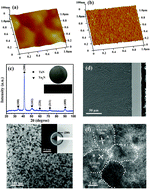The study aims to advance the applicability of titanium alloys as bone implant materials by tackling some important aspects of surface robustness and bioactivity. To do so, biologically active Ta-N nanocrystalline coatings were engineered on Ti–6Al–4V alloy substrates by reactive sputter deposition using a double glow discharge plasma technique. The surface morphology, phase composition and structure of the coatings were characterized using atomic force microscopy (AFM), X-ray diffraction (XRD), X-ray photoelectron spectroscopy (XPS), scanning electron microscopy (SEM) and transmission electron microscopy (TEM). The newly developed coatings are extremely dense, adherent and composed of a cubic TaN phase and a minor fraction of hexagonal Ta2N phase. The microstructure of Ta-N coatings consists of nanocrystallites of about 15–20 nm in diameter, having a strong TaN(200)-oriented texture. Moreover, the coatings exhibit a uniform nanopillar structure on the surface, critical for the observed bioactivity. Scratching tests were performed to evaluate the adhesion strength between the Ta-N coatings and Ti–6Al–4V alloy substrates. The Ta-N coatings were found to exhibit a high scratch resistance and are thus suitable for load-bearing applications. The apatite-inducing ability of the coatings was evaluated in vitro using a simulated body fluid (SBF) that has almost equal compositions of inorganic ions to human blood plasma. After soaking in the solution for up to 14 days, only a few apatite particulates were observed on the surface of untreated Ti–6Al–4V alloy. By contrast, the surface of the Ta-N coatings was completely covered by a compact, AB-type apatite layer free of micro-cracks. High resolution transmission electron microscopy (HRTEM) observations reveal that after soaking for 14 days, the apatite layer, formed through a biomimetic process, comprises closely packed, needle-shaped apatite crystals of 34.5 ± 12.4 nm in length and 6.0 ± 0.2 nm in width. Moreover, nanotwins were identified in apatite, reminiscent of those found in bone minerals. The negatively-charged surface, combined with a unique surface structure of the Ta-N nanoceramic coatings, is believed to be responsible for the formation of a homogenous, compact bone-like apatite layer. The Ta-N nanoceramic coatings are expected to find applications as an integral part of biomaterials used in bone repair and replacement.
